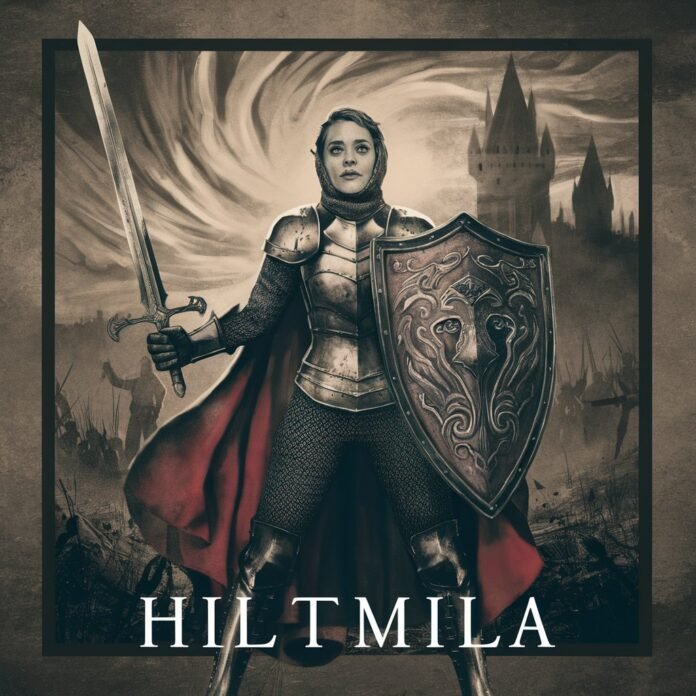Introduction
In the rapidly evolving digital landscape, new platforms and technologies continuously emerge, reshaping how we interact, create, and consume content. Hitlmila has recently surfaced as a buzzworthy name, sparking curiosity among tech enthusiasts and industry analysts alike. Whether it represents a cutting-edge app, a revolutionary blockchain project, or an avant-garde creative community, Hitlmila is generating discussions about its potential to disrupt traditional digital paradigms. This article delves into the origins of Hitlmila, its core functionalities, and the broader implications it may have for technology, entertainment, and online collaboration.
1. What is Hitlmila? Defining the Phenomenon
Hitlmila appears to be a multifaceted digital platform, though its exact nature remains shrouded in intrigue. Early adopters suggest it could be a next-generation social network, blending elements of decentralized governance, immersive media, and user-generated content. Unlike conventional platforms, Hitlmila reportedly emphasizes privacy, creative ownership, and community-driven development, positioning itself as an antidote to the data monopolies of tech giants. Some speculate it integrates Web3 principles, offering tokenized rewards for contributors or leveraging blockchain for transparent content moderation. As details continue to emerge, Hitlmila’s ambiguity fuels both excitement and skepticism, with users eager to see whether it can deliver on its promises of innovation and inclusivity.
2. The Technology Behind Hitlmila: A Glimpse Under the Hood
While official technical documentation is scarce, fragments of information hint at Hitlmila’s robust architecture. Rumors suggest it employs AI-driven personalization to curate user experiences without invasive data mining, alongside edge computing to enhance speed and reduce latency. If blockchain-based, its potential use of smart contracts could automate royalties for artists or enable decentralized voting for platform governance. Early screenshots (leaked or speculative) depict a minimalist interface with modular features, allowing users to toggle between social networking, collaborative workspaces, and digital marketplaces. This adaptability might appeal to creators seeking an all-in-one hub for projects, monetization, and audience engagement—free from algorithmic manipulation.
3. Hitlmila’s Unique Value Proposition: Why It Stands Out

In a saturated market of apps and platforms, Hitlmila aims to differentiate itself through user sovereignty. Unlike platforms that monetize attention via ads, Hitlmila might adopt a subscription or microtransaction model, letting users directly support creators. Its alleged focus on interoperability—allowing data portability across apps—could address growing demands for digital autonomy. For businesses, Hitlmila may offer niche tools like NFT-based memberships or DAO (Decentralized Autonomous Organization) templates for community-led projects. By prioritizing transparency and equitable value distribution, Hitlmila positions itself not just as a tool, but as a movement challenging the status quo of Big Tech.
4. Potential Applications: From Creativity to Commerce
The versatility of Hitlmila could spawn diverse use cases:
-
Creators: Musicians, writers, and visual artists might use it to publish, sell, and collaborate without intermediaries.
-
Educators: Decentralized learning communities could form, with tokenized incentives for student participation.
-
Activists: Secure, censorship-resistant spaces might empower grassroots organizing.
-
Entrepreneurs: Integrated e-commerce features could enable small businesses to connect with global audiences.
If successful, Hitlmila could blur the lines between social media, SaaS (Software as a Service), and the decentralized web, creating a new category altogether.
5. Challenges and Skepticism: Can Hitlmila Deliver?
Despite its promise, Hitlmila faces hurdles. User adoption is critical; even revolutionary platforms fail without critical mass (e.g., Google+). Privacy-focused designs often clash with convenience, potentially deterring mainstream audiences. Additionally, regulatory scrutiny around blockchain and data governance looms large. Skeptics question whether Hitlmila can scale while maintaining its ethos—or if it’s another vaporware project overhyped by crypto-adjacent circles. The team’s ability to articulate a clear roadmap and forge strategic partnerships will determine its longevity.
Conclusion: A Disruptor in the Making?
Hitlmila embodies the zeitgeist of digital disillusionment and the craving for alternatives. Whether it becomes a footnote or a flagship of Web3, its emergence signals a growing demand for platforms that prioritize users over shareholders. As fragments of its vision coalesce, the tech world watches closely—ready to dissect, adopt, or critique the next potential revolution.


